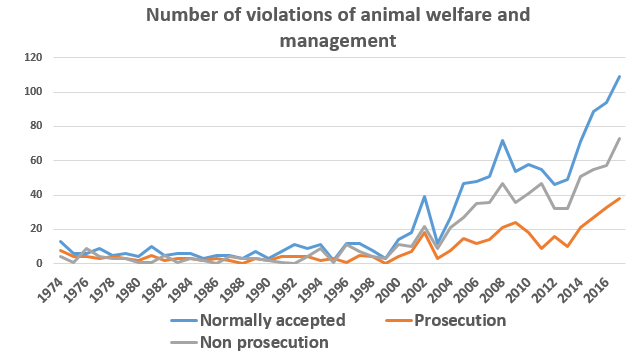Animal cruelty is a heinous act that brings with it profound emotional and physical repercussions. In recent years, awareness has surged regarding the importance of treating animals with compassion and respect. However, the legal ramifications for those found guilty of such acts can vary significantly, depending largely on the severity of the crime. So, how many years can you get for animal cruelty? This question unveils a complex tapestry woven from state laws, crime severity, and the circumstances surrounding each individual case.
To embark on this exploration, one must first understand that animal cruelty laws are not uniform across the nation. Each state has its own statutes, which may classify animal abuse into misdemeanors or felonies based on the nature of the offense. Misdemeanors typically encompass less severe forms of cruelty, while felonies are reserved for more egregious acts, potentially resulting in considerable prison time.
In most jurisdictions, animal cruelty can be broadly categorized into two main types: passive cruelty and active cruelty. Passive cruelty involves neglect—failing to provide necessary care such as food, water, and shelter. Active cruelty, conversely, entails the infliction of pain or suffering, which can manifest in physical abuse, torture, or killing. The differentiation between these two categories is significant when considering sentencing.
For instance, the penalties for passive cruelty can vary widely. In many states, it is classified as a misdemeanor, resulting in a sentence of up to one year in jail and/or a fine. However, some jurisdictions take a harsher stance, imposing more severe penalties under specific circumstances. For example, if the neglect leads to the death of the animal or severe suffering, the offense might escalate to a felony, thereby increasing the potential prison time to several years.
On the other hand, active cruelty offenses often carry stricter penalties. Felony charges for animal abuse can lead to prison sentences ranging from 1 to 5 years, or even up to 10 years or more in particularly shocking cases. Factors that influence the length of the sentence include the severity of the act, the number of animals involved, and whether the perpetrator has a history of similar offenses.
One might ask, “Isn’t it time we took animal laws more seriously?” A challenge resides in the fact that societal norms and attitudes shape these laws. In some instances, cultural acceptance of certain practices—such as dog fighting or even factory farming—may diminish the perceived severity of animal cruelty, despite the abhorrence these actions elicit. This begs the question: how do we advocate for more severe penalties in the wake of such cultural hurdles?
When discussing sentencing for animal cruelty, it is also crucial to examine aggravated circumstances that can heighten the severity of the offense. For instance, if an individual commits an act of cruelty in the presence of children, or if the crime is deemed a hate crime—targeting certain breeds or species based on biased beliefs—the potential sentencing could increase significantly. In some cases, the involvement of additional crimes, such as assault against human victims during the act of animal cruelty, can compound charges and lead to lengthy sentences.
Furthermore, many states are enacting new laws aimed at increasing penalties for animal cruelty. The introduction of statutes such as “Buster’s Law” and similar initiatives signifies a growing recognition of the serious nature of animal suffering and its correlation with violent behavior towards humans. Such legal advancements reflect the belief that cruelty towards animals should carry consequences commensurate with the egregiousness of the act.
Despite the varying degrees of legal repercussions, there remains a constant thread woven through the fabric of animal rights advocacy: the imperative to eliminate animal cruelty altogether. Sentencing is but one facet of a larger puzzle that includes prevention, education, and community involvement. Efforts to raise awareness about the signs of neglect and abuse can empower individuals to intervene and report such cases before they escalate into tragic endings for innocent animals.
Additionally, support for rehabilitation programs for offenders may play a role in reducing recidivism rates. Some experts argue that addressing the underlying issues that lead to animal cruelty—such as mental health problems or socioeconomic factors—can lead to more effective solutions than merely imposing lengthy prison sentences. After all, understanding and healing the motivations for cruelty may ultimately foster a kinder world for both animals and humans alike.
Considering the gravity of this subject, it becomes clear that the question of how many years one can receive for animal cruelty encapsulates a myriad of implications. Legal consequences vary dramatically across jurisdictions and are influenced by numerous factors, including the nature of the offense and prior history of the perpetrator. As society progresses, so too must our laws reflect an unwavering commitment to animal welfare. The challenge ahead is great; however, with persistent advocacy, community engagement, and a commitment to education, we can forge a pathway to a just and compassionate world for all living beings.







